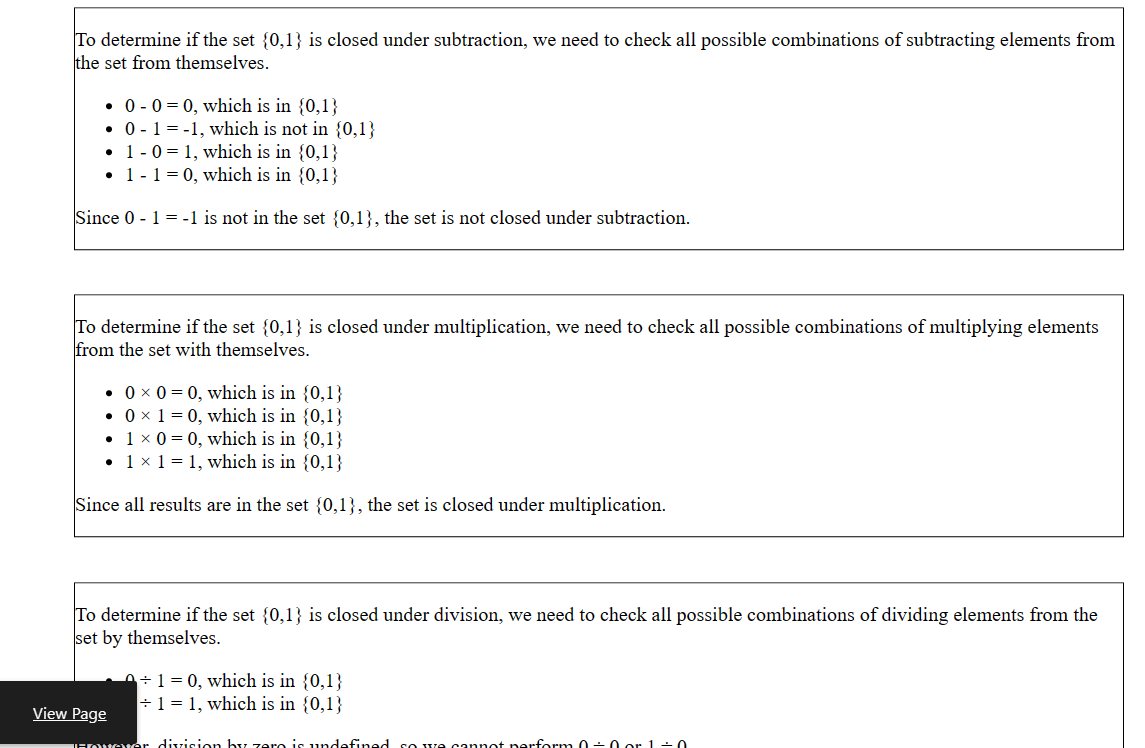To determine if the set {0,1} is closed under addition, we need to check all possible combinations of adding elements from the set to themselves.
- 0 + 0 = 0, which is in {0,1}
- 0 + 1 = 1, which is in {0,1}
- 1 + 0 = 1, which is in {0,1}
- 1 + 1 = 2, which is not in {0,1}
Since 1 + 1 = 2 is not in the set {0,1}, the set is not closed under addition.
To determine if the set {0,1} is closed under subtraction, we need to check all possible combinations of subtracting elements from the set from themselves.
- 0 – 0 = 0, which is in {0,1}
- 0 – 1 = -1, which is not in {0,1}
- 1 – 0 = 1, which is in {0,1}
- 1 – 1 = 0, which is in {0,1}
Since 0 – 1 = -1 is not in the set {0,1}, the set is not closed under subtraction.
To determine if the set {0,1} is closed under multiplication, we need to check all possible combinations of multiplying elements from the set with themselves.
- 0 × 0 = 0, which is in {0,1}
- 0 × 1 = 0, which is in {0,1}
- 1 × 0 = 0, which is in {0,1}
- 1 × 1 = 1, which is in {0,1}
Since all results are in the set {0,1}, the set is closed under multiplication.
To determine if the set {0,1} is closed under division, we need to check all possible combinations of dividing elements from the set by themselves.
- 0 ÷ 1 = 0, which is in {0,1}
- 1 ÷ 1 = 1, which is in {0,1}
However, division by zero is undefined, so we cannot perform 0 ÷ 0 or 1 ÷ 0.
Since division by zero is undefined, the set {0,1} is not closed under division.

